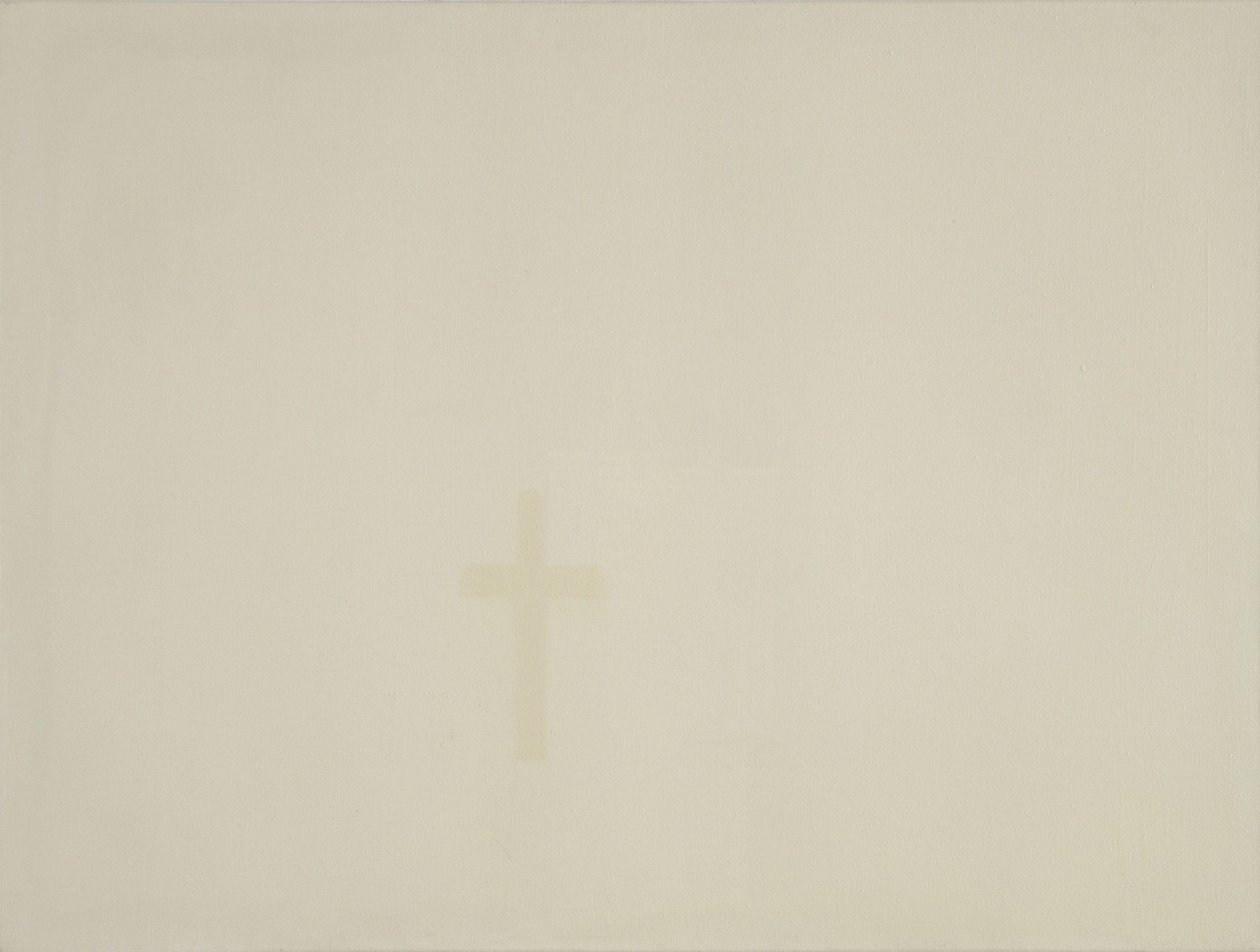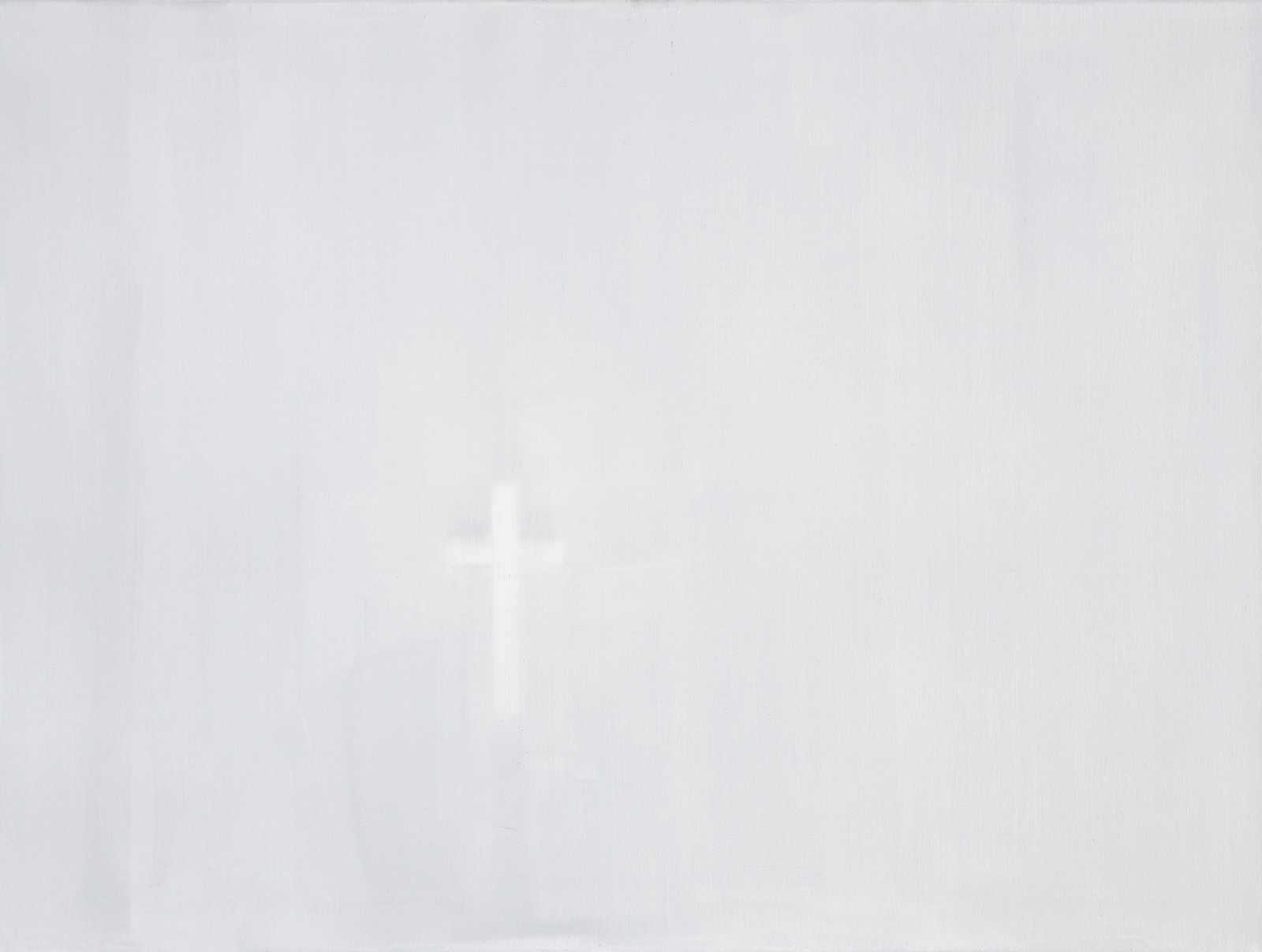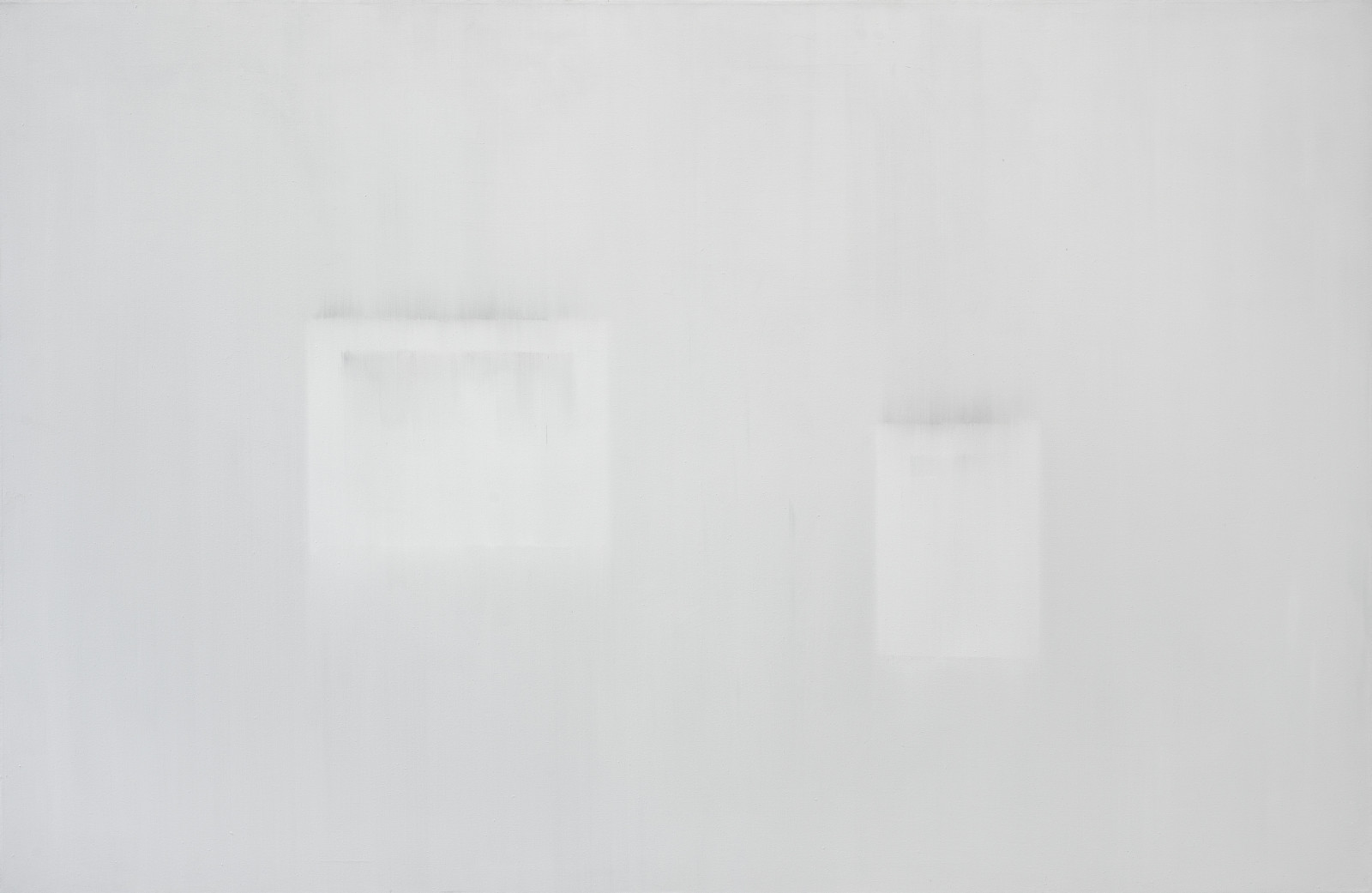
“The Traces of Paintings series is a remarkably subversive trap for an image. There are several views of walls with lighter spots where crosses or pictures once hung. As the series required painterly talent, it was allowed to come to the fore. The result was pictures giving us partial insight into another life. The only fairly precise information is the trace left behind from the cross. Perhaps the people who lived here were religious, or at least superstitious. The traces of the pictures, on the other hand (or perhaps only traces of mirrors?) tell us almost nothing. At most they can suggest that some middle-class people once hung pictures on their walls. Traces of Paintings are pictures that show the absence of pictures. At the same time, they speak of how mysterious and intriguing absence can be when something has not vanished entirely.
The traces on the walls provoke reflection. In the 1970s Andrzej Dłużniewski took photographs of such spots where pictures once hung. He was fascinated by things which suggest something, but say nothing. This was a documentation of an intriguing thing. Painting a picture is a different sort of procedure, however. A photograph involves looking, painting involves invention. Moreover, painting a picture is a declaration of significance. Why does a mark on a dirty wall deserve such a distinction? For at least two reasons. Firstly, it involves peeking in on someone else’s life, and this is a thing that interests us a great deal. Second, it is a dialectical game with the image, which depicts something that has ceased to be an image.”
Maria Anna Potocka, museum director and writer


